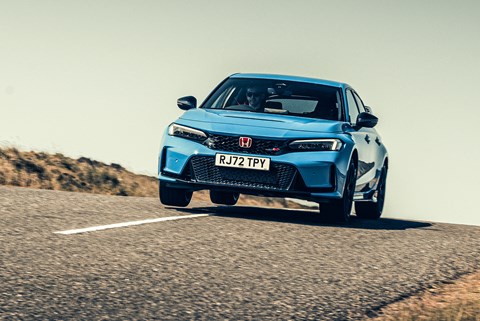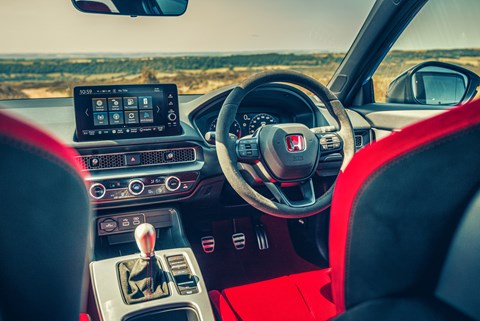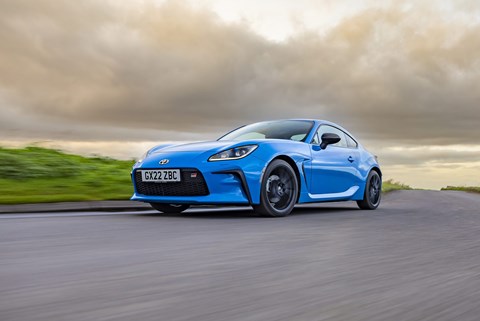► Red tape throttles JDM supply into Europe
► Emissions and safety regs are the cause…
► Meaning they’re getting rarer, more expensive or being culled
We are living in a new halcyon era of the Japanese sports car. Toyota has the petrolhead by the scruff of the neck with its GR86 and GR Yaris in Europe, as well as the GR Corolla in North America. Honda’s new Civic Type R is the instant classic we all hoped it would be. Hell, even Nissan has resurrected the Z car.
But for the European and UK enthusiast this surge of immensely tasty metal from the other side of the world comes at a significant cost. Safety and emissions regulations, combined with some huge price rises, are restricting sales so much that they could end up being seen on the road about as often as unicorns. Few cars illustrate this point more than the heavily-updated Toyota GR Yaris that’s just gone on sale in the UK in March 2024, as well as the new FL5-generation Honda Civic Type R.
With the Yaris, some will notice the astronomical price rise between the original car and the base-spec facelift; we noted a £33,495 price tag during our 2020 Hot Hatch of the Year test for a top-end Circuit Pack model with all of the goodies needed to get the best out of the car. Now? A base model GR Yaris clocks in at £44,250 – albeit that model does come with a lot of the tech from the pre-facelift Circuit Pack (and even more power) included. The new model already feels a fundamentally better car after driving an engineering prototype, but that’s still a huge cost addition.
It’s the same with the Honda. When the previous-generation FK8 launched it cost around £31k. Now, Honda’s asking for a mighty £49,995 in 2024. And where Honda UK would shift thousands of Civic Type Rs per year just a couple of generations ago, its 2023 allocation was in the hundreds.
Why? Fleet CO2 limits. Exceeding those means utterly enormous fines, even if you miss that target by a tiny amount. At the beginning of 2021, Reuters reported that Volkswagen faced a €100m fine for missing the target fleet CO2 average by just 0.5g/km.

It’s the reason why the likes of Honda have re-worked the economics around its tearaway Civic Type R. If it’s forced to shrink volume, why not crank up the price, in turn paying for more high-performance engineering, and reward the hardcore enthusiast with a truly special car? The same logic applies to that new-generation GR Yaris; sell fewer cars with fatter margins so the brand still makes money, but doesn’t fall quite so foul of fleet CO2 averages.
New Euro 7 emissions regulations have blindsided the automotive industry, adding significant financial and time costs as manufacturers – already flat-out racing to electrify – have to rework powertrains. ‘If a car is in production and regulation changes, normally you’d get a two-year grace period,’ a senior European engineer tells CAR. ‘But with Euro 7, it doesn’t look like that’s happening.’
And the legislation will require car makers to make some profound engineering changes to keep cars in production. ‘Euro 7 covers emissions, tyres and brakes. For brakes, do we have to change the size of the discs? The brake’s system performance? Is it a full change? Then what does that mean for stopping distances?’
All models must either be adapted in double-quick time or face early retirement. And new models naturally need to comply; not straightforward considering the short lead time for implementing Euro 7.

And that’s not all. The latest General Safety Regulation (or GSR2) kicked in from July 2022, and although the UK is no longer in the EU, it still applies in the UK. It specifies that new cars need intelligent speed assistance, some sort of reversing aid, driver attention warnings and additional cybersecurity measures. All things that will add cost, making a big difference on more affordable cars.
Cars already in the line-up have an additional two years to comply; if the manufacturer wants that model to remain on sale, it must find a way of adding those features.
‘Every new registration needs a speed limiter, cameras have to be a higher spec and accurate to around 90 per cent across the whole of Europe,’ says our engineer. ‘There even needs to be a [docking station] for an alcohol breathalyser.’

GSR2 is the reason the GR86 has such a small sales window, for example. According to our sources, fitting the new camera needed for the speed and lane-keeping tech would involve redesigning the roof and windscreen – a prohibitively expensive refit for a low-volume sports car. That’s a move Toyota’s not prepared to make, meaning the GR86 will go off sale in 2024 in the UK and EU, before it falls foul of the new rules.
So, if you’re one of the few who succeeds in getting the keys to one of these endangered species, count your blessings and drive it. The rest of us will look on with envy but, perhaps, with fatter wallets.